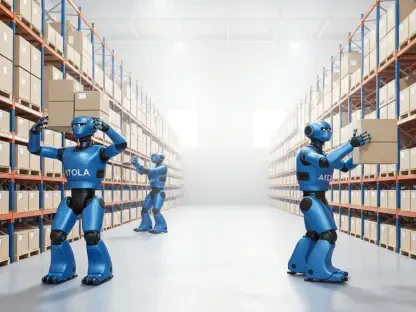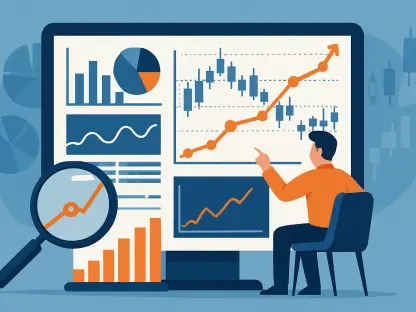Sustainability has seemingly become a big thing overnight, driving a new cornerstone of innovation (especially with the growing demands of artificial intelligence and its impact on resources). And the shift is coming at the right time—not only as a moral imperative or a strategic opportunity, but also to create a future for the generations to come. Climate change shows no sign of slowing down, resource depletion is a real threat in a limited world, evolving customer expectations ask for greener offerings, and new compliance rules are being put in place. These sources of pressure are collectively creating a recipe for either disaster or success, depending on whether you’re ready to develop a business model centered around succeeding with green technology or risk failing into irrelevance.
Getting started on this path might not be an easy task, but there are some core principles and strategies you can follow to speed up the journey, make more informed decisions, and turn true sustainability into a real competitive advantage.
The Foundations of a Green Business Model: Do You Know Where to Start?
When shaping your strategy for sustainability, you can’t dive directly into the “how”—not when you must first understand and carefully assess what defines a green business model for your enterprise. Generally, at its core, this approach is one meant to integrate environmental and social considerations into each and every aspect of your corporate happenings (from sourcing to production, distribution, and even end-of-life disposal). The element that sets a long-term and sustainable strategy apart from superficial greenwashing practices? A systemic overhaul of a traditional, linear, and outdated culture that moves from extracting, producing, using, and disposing of materials to circularity, renewable resourcing, and future-driven ecological balance.
The foundational basis? Proving to your leadership that profitability and sustainability aren’t (and shouldn’t be) mutually exclusive concepts. When done right, sustainability isn’t just a core of assurance regarding the planet’s wellbeing, but also a driver of innovation, cost savings, brand loyalty, and resilience. And to start this path the right way, you need to align your value proposition, supply chain, customer relations, and revenue mechanism with sustainable practices.
But How Can You Make Green Solutions Shine on the Market?
Even with a legacy business model, value proposition ca be a finicky thing to handle—more so today, with the fast-paced market changes and ever-shifting consumer demands. The pain point only heightens when you’re bringing sustainability into this delicate scheme and switching to a green corporate strategy. Your products should still be attractive to clients and deliver tangible benefits, even as they address environmental challenges (so, it’s clear that just the promise of a greener future won’t hit the mark for many audiences).
Need an example? Take Tesla’s value proposition—not just about manufacturing electric cars that are better for the environment and reduce the dependence on fossil fuels, but also providing high-performance and desirable vehicles that meet modern aesthetics. Similarly, Beyond Meat offers plant-based meat alternatives that appeal to health-conscious, environmentally aware consumers, but their true success lies in being able to balance their alignment with a greener future with high-quality products and a decent price.
If you’re a new company just starting your business (or even one that’s transitioning and revamping your ecosystem), you’ll soon realize that identifying the right green value proposition might be one of your biggest pain points, as it must delight both executives and potential clients. So, here are a few questions that you should add to your checklist: Can your product be made using fewer resources? Will it be built to be reused, recycled, or biodegradable when it reaches its end of life? Does your service reduce energy consumption or carbon emissions for users?
Product Design and Circular Economy Principles
The question that comes next: how do you start your efforts to join the circular economy principles?
First, you take action by focusing on sustainable sourcing, the ground on which everything else is built: evaluating your raw materials and choosing suppliers who meet the environmental and ethical standards you hold true for your operations. That doesn’t stop at just sourcing organic, renewable, and recycled materials—but ensuring that labor practices align with social responsibility goals. Certifications related to Fair Trade, the Forest Stewarding Council, and ISO 14001 can be implemented as useful benchmarks to help guide your decision when it comes to partnerships.
Once you’ve prepared your outsourcing roadmap, it’s time to move to the next step: energy efficiency and how it fits in the production processes. A key choice here is transitioning to renewable energy sources like solar, wind, and geothermal power (which are poised to considerably reduce a company’s carbon footprint) and building a commitment to set a new industry standard.
A green business model also means designing your solutions with sustainability in mind. You should focus not only on using freer resources, but delivering products meant for durability and with a modular infrastructure, facilitating recycling—a move that’ll allow you to join an economy where products are reused and refurbished rather than discarded. The best part? These eco-design principles can be embedded into the early stages of product development, either through easy upgrades or simple repairs that focus on one element instead of encouraging full replacements. Using non-toxic, biodegradable materials will also reduce environmental impact, and lifecycle assessments will offer a clear and direct view on how you can minimize your waste footprint.
Some of your peers are already pioneering this approach. IKEA is launching initiatives to buy back used furniture and resell or recycle it, while Patagonia encourages consumers to repair or reuse their gear through its Worn Wear program, building stronger relationships with its eco-friendly consumers even as they push for change to reduce waste.
Closing Thoughts
Starting your sustainability roadmap might not seem fun or exciting at the start, not when it brings so many challenges, expectations, and plans for the future. It’s even more difficult if you’re driven to reimagine your operational model from the ground up and dedicate your time to meeting green technology demands for years to come.
But not everything’s grim. The process is a rewarding one—a chance to embrace the circular economy, better engage consumers and stakeholders alike, and make sure that each aspect of your enterprise aligns with environmental and societal responsibility. Your eco-friendly mindset won’t only contribute to creating a healthier planet. If you’re willing to continuously innovate, adapt, and embed green goals into the DNA of your business, you’ll also be set up for long-term, ongoing success among a growing base of consumers.









